Author: Will Lovell
While not necessarily a traditional beer ingredient, in recent history, honey has become popular among brewers looking to boost both flavor and strength in their product. With the broad variety of honey available on the market today, brewers have numerous options for adding unique characteristics to their beer, though the manner in which honey gets added during the brewing process is a topic of debate.
Honey is known to contain many volatile compounds that contribute to each type’s unique flavors, and it’s widely believed that these compounds are sensitive to heat. For this reason, rather than adding honey during the boil step as one would other adjuncts, some brewers advocate for adding it during fermentation to retain as much of the desirable characteristics as possible.
In the time I’ve been brewing, I’ve used honey in many batches, and while I started off adding it toward the end of the boil, I was convinced to hold off until fermentation in order to retain the volatile compounds. While I’ve had good experiences with both methods, I’ve felt like the fermentation additions have resulted in more honey character in my beer, but has it? I designed an xBmt to see for myself!
| PURPOSE |
To evaluate the differences between a Blonde Ale where honey was added either at the end of the boil or during fermentation.
| METHODS |
For this xBmt, I went with a simple Blonde Ale recipe in hopes any differences would be readily apparent.
Hivemind
Recipe Details
| Batch Size | Boil Time | IBU | SRM | Est. OG | Est. FG | ABV |
|---|---|---|---|---|---|---|
| 5.5 gal | 60 min | 21.1 | 5.3 SRM | 1.049 | 1.006 | 5.64 % |
| Actuals | 1.049 | 1.006 | 5.64 % | |||
Fermentables
| Name | Amount | % |
|---|---|---|
| Wildfire Pale Malt | 8 lbs | 78.05 |
| Honey | 1.5 lbs | 14.63 |
| Munich Malt | 12 oz | 7.32 |
Hops
| Name | Amount | Time | Use | Form | Alpha % |
|---|---|---|---|---|---|
| Northern Brewer | 14 g | 60 min | Boil | Pellet | 10.2 |
| Amarillo LUPOMAX | 14 g | 2 min | Boil | Pellet | 14.5 |
Yeast
| Name | Lab | Attenuation | Temperature |
|---|---|---|---|
| Flagship (A07) | Imperial Yeast | 77% | 60.1°F - 72°F |
Notes
| Water Profile: Ca 62 | Mg 0 | Na 0 | SO4 79 | Cl 51 |
Download
| Download this recipe's BeerXML file |
I started my brew day by collecting 2 identical volumes of RO water, adjusting each to the same desire mineral profile, and flipping the switches on my Delta Brewing AIO units to get them heating up before measuring out and milling the grain.
Once the water for each batch was adequately heated, I incorporated the grains then checked to make sure both were at the same target mash temperature.
While the mashes were resting, I prepared the kettle hop additions.
Once the 60 minute mashes was complete, I removed the grains and proceeded to boil each wort for 60 minutes, adding the honey to one of them with 5 minutes left in the boil.
When the boils were complete, I quickly chilled the worts then transferred them to sanitized Kegmenters.
Refractometer readings showed the batch where honey was added during the boil had a higher OG than the one where honey would be added during fermentation, which is to be expected.
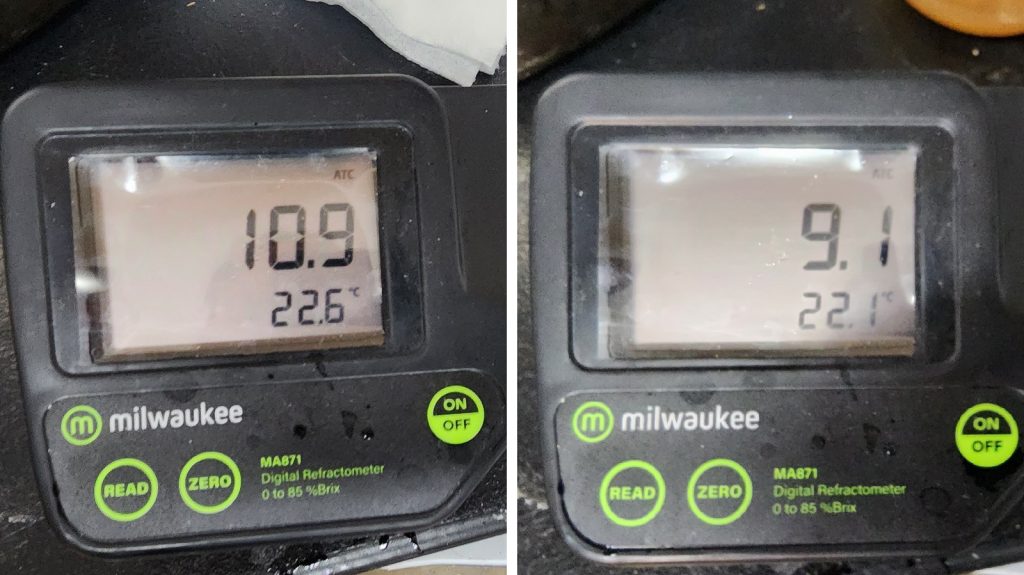
With the worts sitting at my desire fermentation temperature of 66°F/19°C, I direct pitched a single pouch of Imperial Yeast A07 Flagship into each batch.
At 3 days into fermentation, I returned to add the honey to the other batch.
With visible signs of activity absent after 2 weeks, I took hydrometer measurements showing a very small difference in FG.

At this point, I cold crashed the beers overnight then pressure-transferred them to CO2 purged kegs, which were placed in my kegerator and burst carbonated for 15 hours before the gas was reduced to serving pressure. After a week of cold conditioning, the beers were carbonated, clear, and ready to serve.
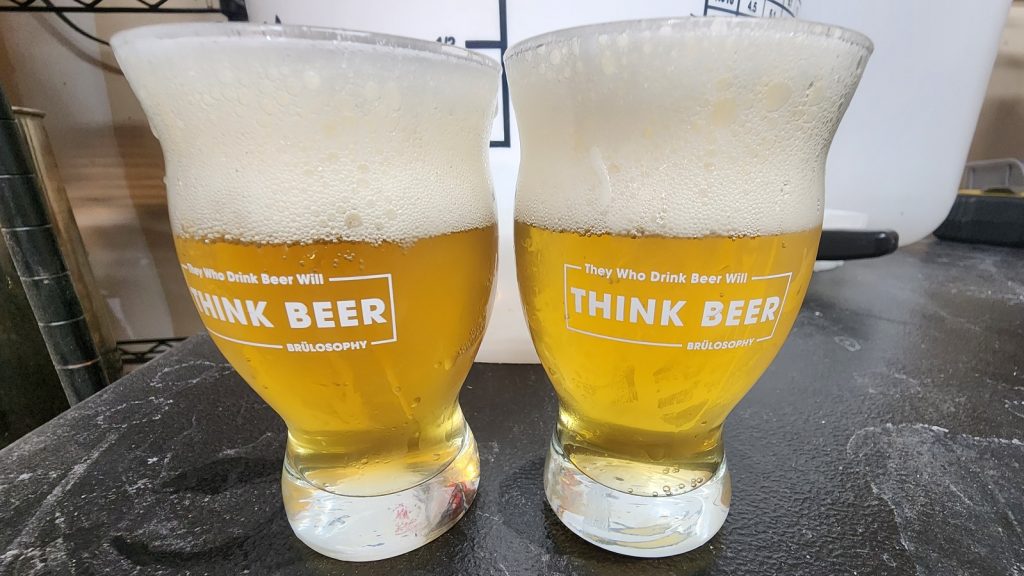
| RESULTS |
A total of 23 people of varying levels of experience participated in this xBmt. Each participant was served 2 samples of the beer where honey was added to the boiling wort and 1 sample of the beer where honey was added during fermentation in different colored opaque cups then asked to identify the unique sample. While 12 tasters (p<0.05) would have had to accurately identify the unique sample in order to reach statistical significance, only 7 did (p=0.69), indicating participants in this xBmt were unable to reliably distinguish a Blonde Ale where honey was added in the last 5 minutes of the boil from one where the same amount of honey was added 3 days into fermentation.
My Impressions: Out of the 5 semi-blind triangle tests I attempted, I happened to guess the odd-beer-out 3 times, though I’ll admit these beers were identical in every way to me. Both were clean examples of Blonde Ale that possessed a nice honey aroma that came through very subtly in the flavor.
| DISCUSSION |
Honey is a versatile brewing ingredient that can be used in a broad range of styles to contribute flavor, increase alcohol content, and it can even serve as the priming sugar for bottle conditioning. Countering claims that adding honey to boiling wort leads to the volatilization of desirable compounds, tasters in this xBmt were unable to reliably distinguish a Blonde Ale where honey was added in the last 5 minutes of the boil from one where the same amount of honey was added 3 days into fermentation.
While the most obvious explanation for these results is that the volatile compounds in honey are equally as reactive to heat as they are fermentation, it’s possible using a larger volume of honey would have led to a more discernable difference. The perceptible similarities between these beers may also be a function of the variety of honey used; perhaps a less mild type would have had a greater effect.
As someone who made the conscious decision to switch from adding honey to the boil to adding it to the fermenter as a means of preserving honey character, I was absolutely floored by these results. Given both the blind taster results as well as my own experience with these beers, I’m now convinced my perception was likely due to expectation bias. That’s not to say I don’t believe there might be something to the claims about adding honey during the boil, I’m just now even more inspired to continue exploring this interesting topic.
If you have any thoughts about this xBmt, please do not hesitate to share in the comments section below!
Support Brülosophy In Style!
All designs are available in various colors and sizes on Amazon!
Follow Brülosophy on:
FACEBOOK | TWITTER | INSTAGRAM
If you enjoy this stuff and feel compelled to support Brulosophy.com, please check out the Support page for details on how you can very easily do so. Thanks!


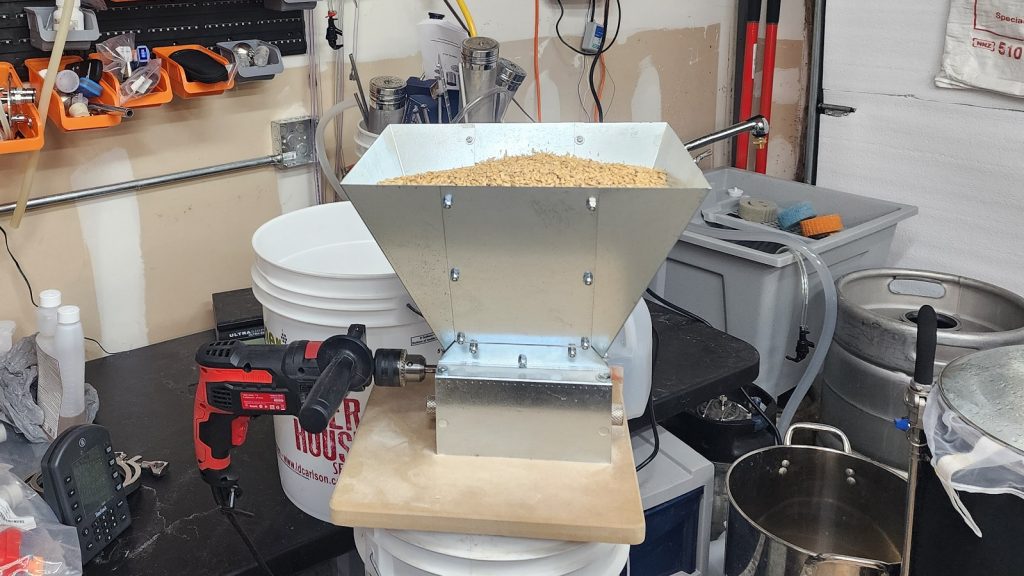
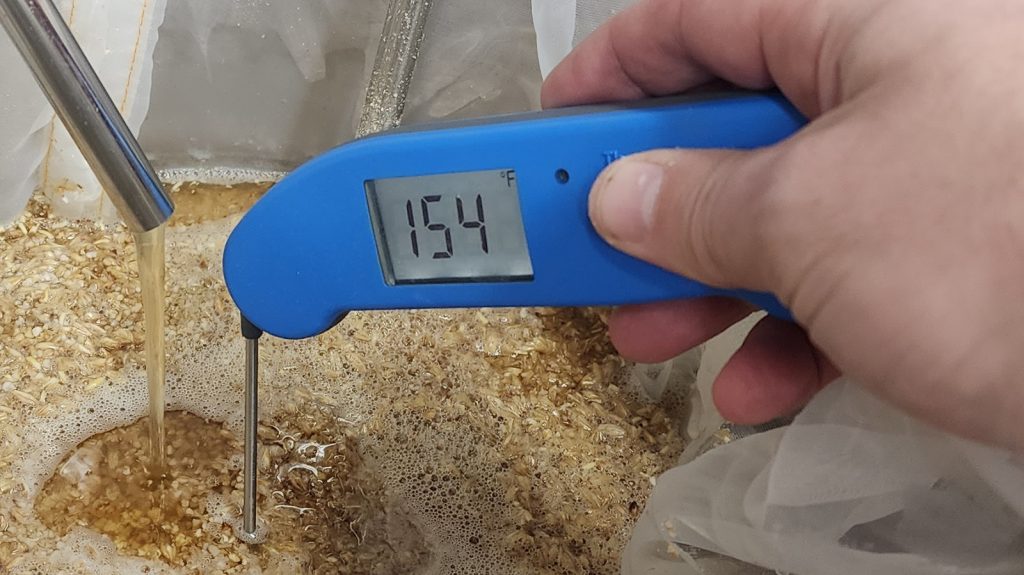

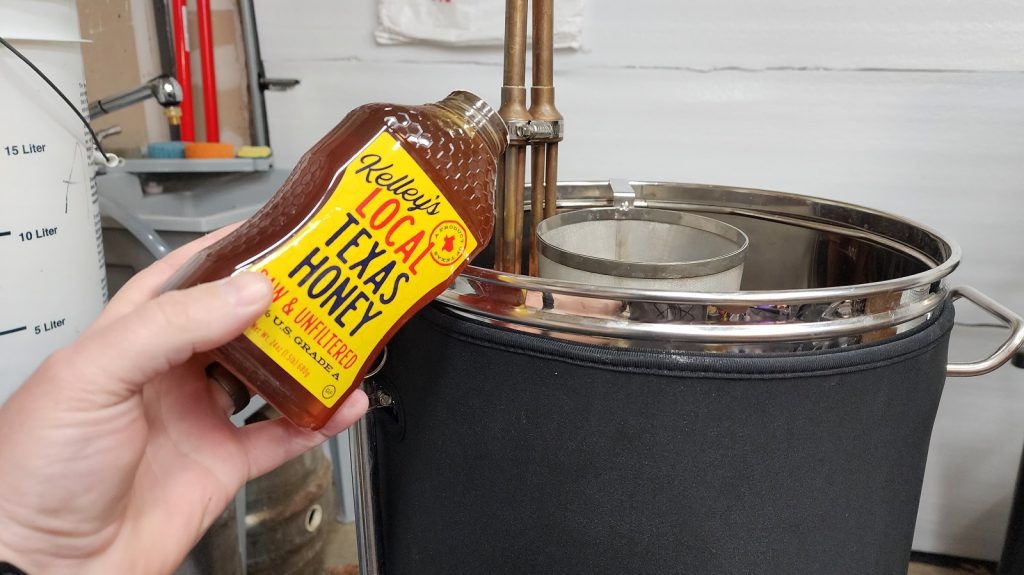


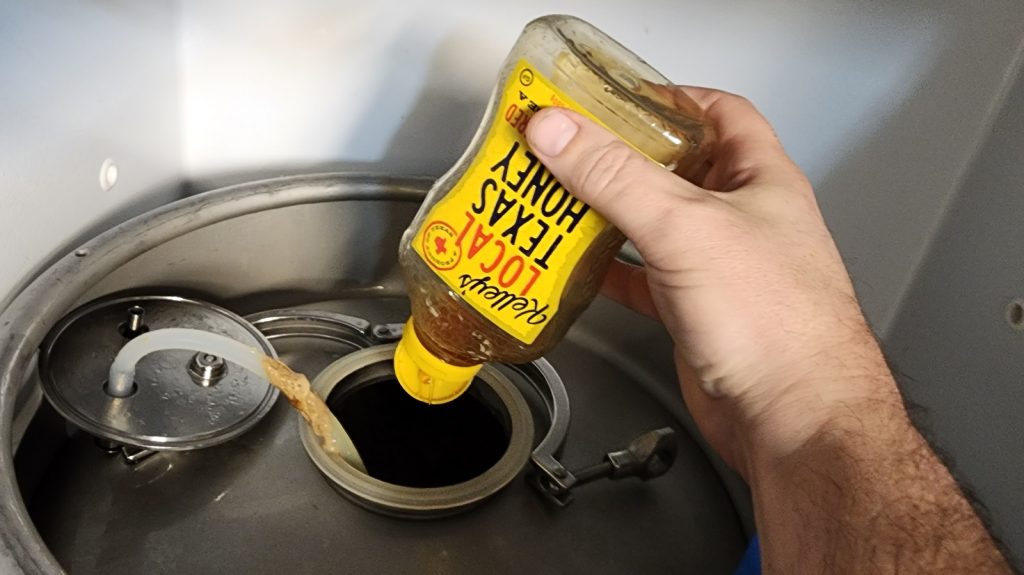











2 thoughts on “exBEERiment | Brewing With Honey: Boil vs. Fermentation Addition In A Blonde Ale”
Very interesting result! It’s good to know the timing is flexible here. I just used raw honey as a 5 minute boil addition in a batch of Belgian Tripel. I was slightly concerned that adding to the boil would effect the flavor, but was more worried that it would pose a contamination risk if added during fermentation.
Sounds like I had nothing to worry about either way.
Great exBEERiment, I’m definitely goingbto switch to adding during fermentation. I was told that is healthier for the yeast to add the honey during fermentation.. a bit difficult to verify